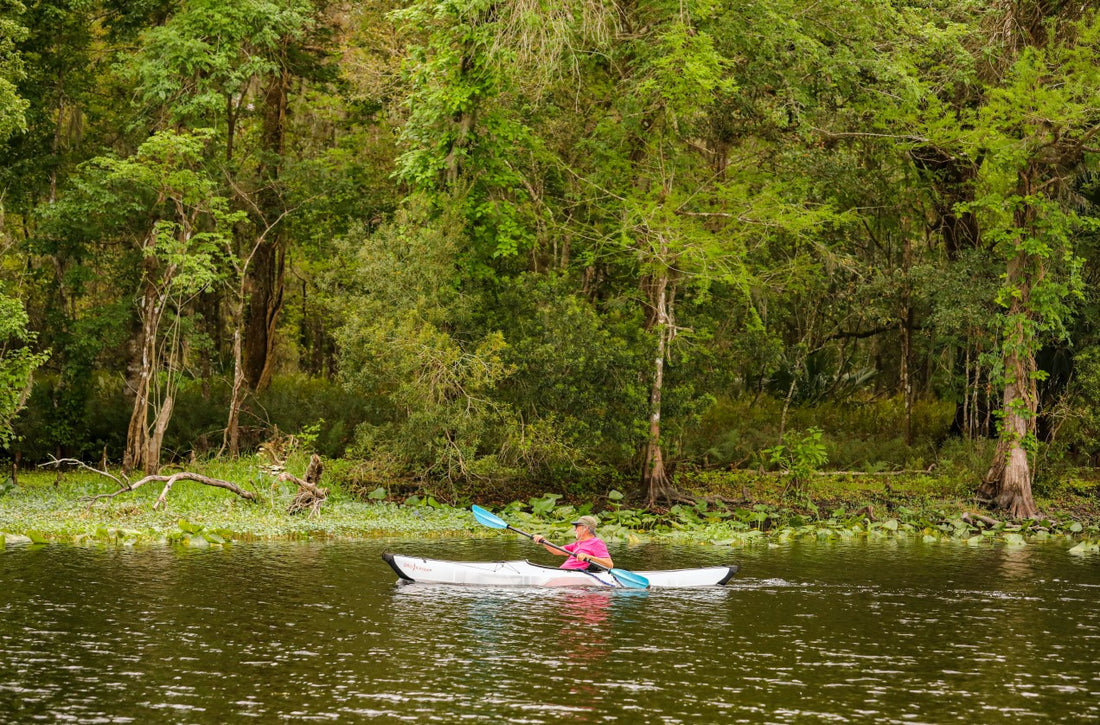
Kayaking and canoeing are exhilarating water activities that offer a unique blend of adventure and tranquility. As you delve deeper into these sports, you'll encounter various tools and accessories designed to enhance your paddling experience. Among these are kayak skegs and rudders, indispensable devices that play a crucial role in improving tracking and maneuverability. In this comprehensive guide, we'll take you through the basics of kayak skegs and rudders, exploring their types, functions, and how they impact your paddling journey.
I. Understanding the Need for Kayak Skegs and Rudders
-
Tracking and its Challenges: Maintaining a straight course (tracking) is essential for efficient paddling. Factors like wind, currents, and water conditions can adversely affect tracking, leading to unnecessary energy expenditure and a less enjoyable experience on the water.
-
Enhancing Maneuverability: Besides tracking, the ability to maneuver quickly and accurately is crucial, especially when navigating tight waterways, avoiding obstacles, or performing advanced paddling techniques.
II. Types of Kayak Skegs and Their Impact on Tracking
- Retractable Skegs:
- Description: Retractable skegs are fin-like devices that can be lowered or raised into the water. They are typically positioned on the kayak's centerline, just in front of the cockpit.
- Function: When lowered, retractable skegs offer lateral resistance, counteracting the effects of wind and currents to improve tracking.
- Versatility: They excel in calmer conditions, offering a balance of improved tracking and reduced drag during paddling.
- Fixed Skegs:
- Description: Fixed skegs are permanent fin attachments on the kayak's hull, made of plastic or metal.
- Function: These fixed skegs provide constant lateral resistance, ensuring reliable tracking performance even in challenging conditions.
- Ideal for: Sea kayaks designed for long-distance paddling and touring in open water.
III. Types of Kayak Rudders and Their Impact on Maneuverability
- Deployable Rudders:
- Description: Deployable rudders are hinged fin-like devices controlled by foot pedals connected to cables.
- Function: When deployed, the rudder can be adjusted to counteract crosswinds and strong currents, significantly improving maneuverability and making precise turns possible.
- Use Cases: Ideal for navigating unpredictable water conditions, especially in open water and coastal areas.
- Skeg-Style Rudders:
- Description: A hybrid system combining elements of skegs and rudders.
- Function: These rudders resemble skegs but can pivot like rudders when deployed, providing improved tracking and enhanced maneuverability simultaneously.
- Recommended for: Kayakers seeking versatile equipment that performs well in various water conditions.
IV. Choosing the Right System for Your Paddling Needs
-
Paddling Environment: Consider the primary water environments you'll explore. For open water and coastal paddling, a rudder or skeg-style rudder might be beneficial. For inland waterways and calm lakes, a retractable skeg should suffice.
-
Skill Level: Novice paddlers may find skegs more user-friendly initially, as they provide consistent tracking without the complexity of rudder control. Experienced paddlers can explore the added maneuverability of rudders.
-
Kayak Type: Check if your kayak is compatible with the skeg or rudder system you wish to install. Some kayaks come pre-equipped with one or both of these features.
Understanding the importance of kayak skegs and rudders in improving tracking and maneuverability can significantly enhance your paddling adventures. Whether you prefer the simplicity of retractable skegs, the versatility of skeg-style rudders, or the precision of deployable rudders, the right choice depends on your paddling goals and the water conditions you'll encounter. Always remember to practice proper kayaking techniques and familiarize yourself with the operation of your chosen system to make the most of your paddling experience. Now, it's time to hit the water and embark on your kayaking journey!
